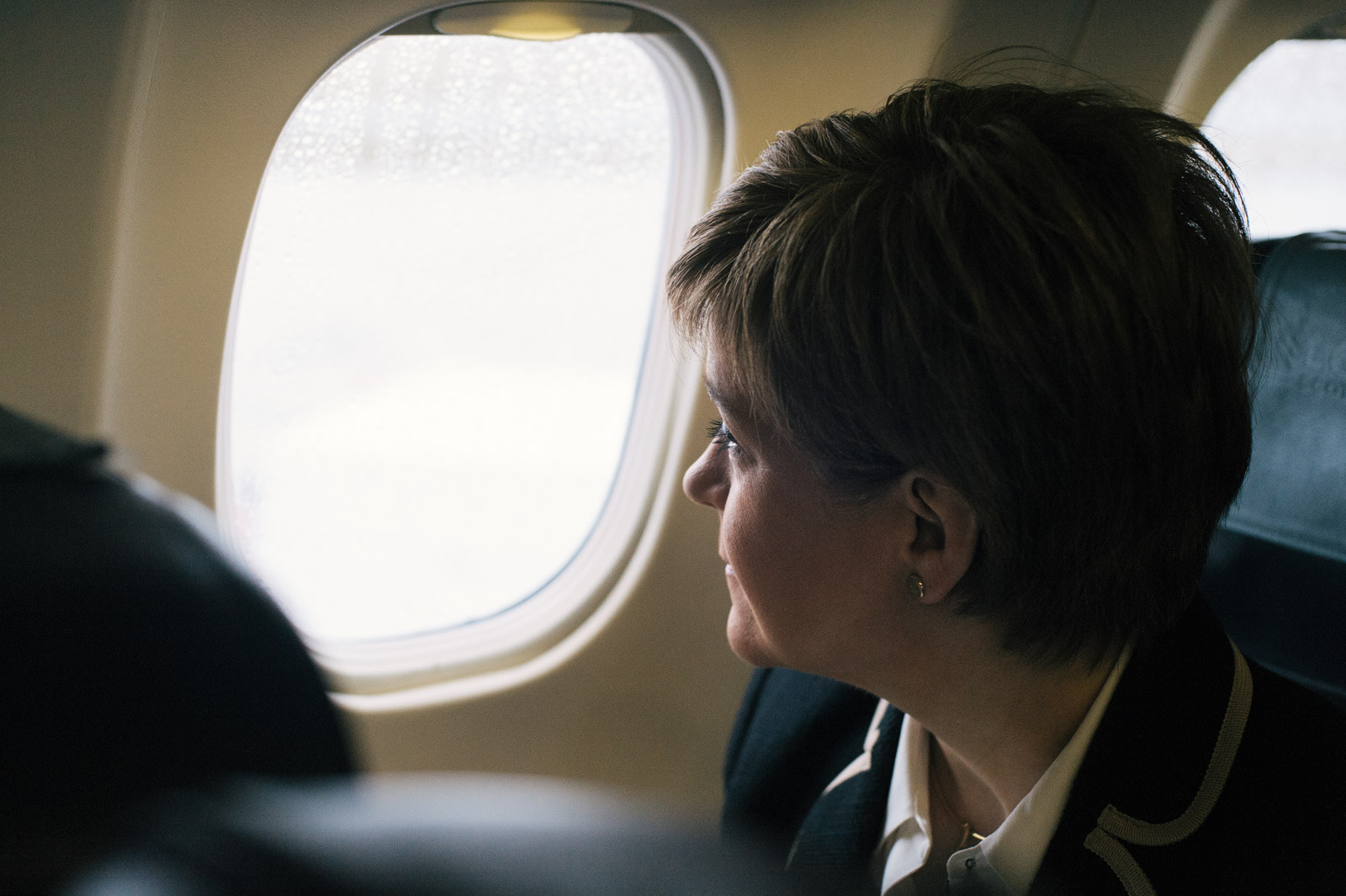
“I’m trying to think of a circumstance where I would refuse a selfie,” Nicola Sturgeon tells BuzzFeed News. “There will be circumstances in which I would, but I don’t think I’ve come up against one.”
After a three-day campaign tour in the Northern Isles of Scotland, it’s a wonder the sheer volume of selfies taken with the first minister and uploaded to Instagram hasn’t irreparably destroyed the islands’ already-fragile wireless networks.
Going by past election results, it would be understandable to assume that Orkney and Shetland – separated from the mainland in both geography and identity – would be the places most immune to the allure of the SNP that has swallowed Scotland’s politics since the 2014 independence referendum.
But, starting with a 14-hour ferry ride from Aberdeen to Lerwick – during which the first minister held what is likely to be the only seaborne Q&A session of the election campaign – and ending in the departure lounge of Kirkwall Airport, the welcome Sturgeon is given is not one typically afforded to visiting politicians. At best, politicians should be politely applauded, and, at worst, pelted with something unpleasant. Wherever Sturgeon went on this trip, whether at an SNP rally or not, people were genuinely excited to see her.
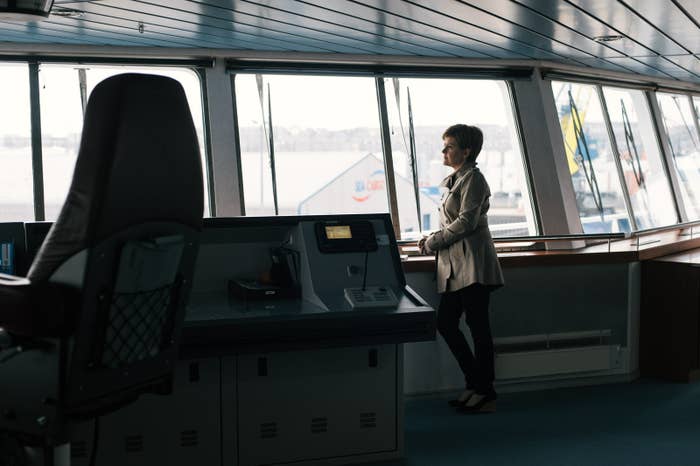
The Northern Isles were one of three places the SNP failed to conquer in last year’s general election. The party now senses a chance for revenge in May’s Scottish parliament vote, in no small part down to the actions of Orkney and Shetland’s beleaguered Liberal Democrat MP, Alistair Carmichael. In December, the former Scotland secretary was proven to have misled constituents during the general election about the leaking of a memo claiming Sturgeon secretly desired a Conservative victory.
Sturgeon’s party stands a realistic chance of winning every single one of the Scottish parliament’s 73 constituencies, and the first minister aims to visit all of them before polling day on 5 May to make sure there are no slip-ups this time round. A convoy of black vans emblazoned with huge “Nicola Sturgeon for First Minister” logos shuttled Sturgeon and her team through a full diary of campaign events to help ensure the islands turn SNP yellow in four weeks’ time.
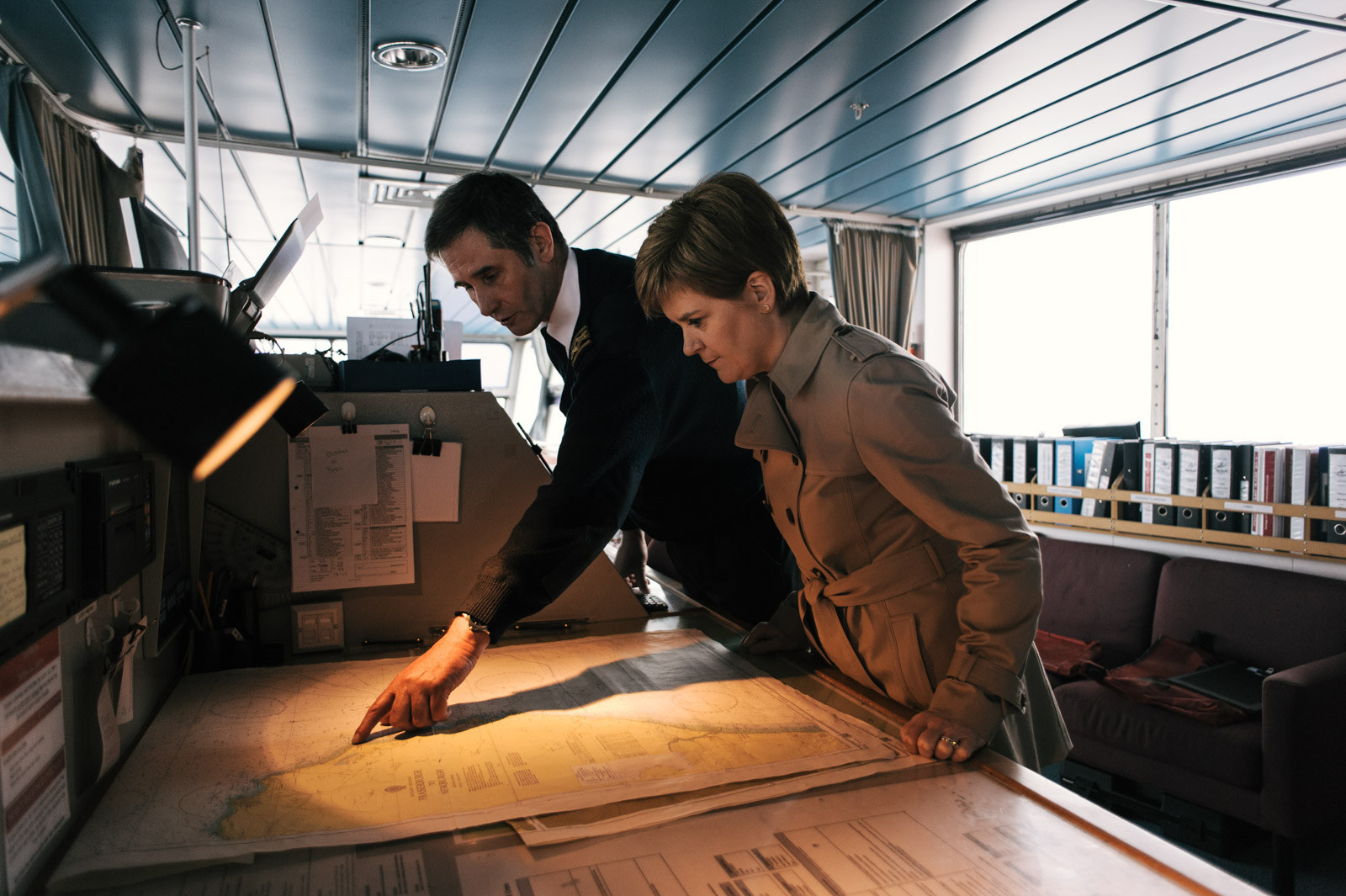
At the end of the trip, when she finally sits down in a Kirkwall café with BuzzFeed News, Sturgeon talks about the financial struggles Scotland could have faced if it had become independent last month, sets out her ideal legacy for her time as first minister, and settles controversy over her new Apple Watch.
The SNP leader, who has had a major campaign to fight every year since 2014’s referendum, seems understandably tired as she joins us at the table: “It’s the adrenaline levels of the campaign that keep you going – when I get tired is when I stop for any length of time,” she says. “When I sit down for a cup of tea I get tired, but once I get going again I’m always fine.”
Sturgeon’s energy levels will need to stay high during the campaign as she has quickly become, by far, the party’s most effective weapon since she took over as leader 16 months ago.
Her predecessor, Alex Salmond, was more divisive and combative than Sturgeon, even though she can be eerily similar to her mentor when dealing with her opponents and, on some occasions during the trip, the media. But, when with the public, Sturgeon plays the role of Scotland’s fairy godmother. She reassures the islanders she will fix the ferries and the patchy 3G, and allays suspicions in Shetland that Orkney gets all the money and suspicions in Orkney that Shetland gets all the money.
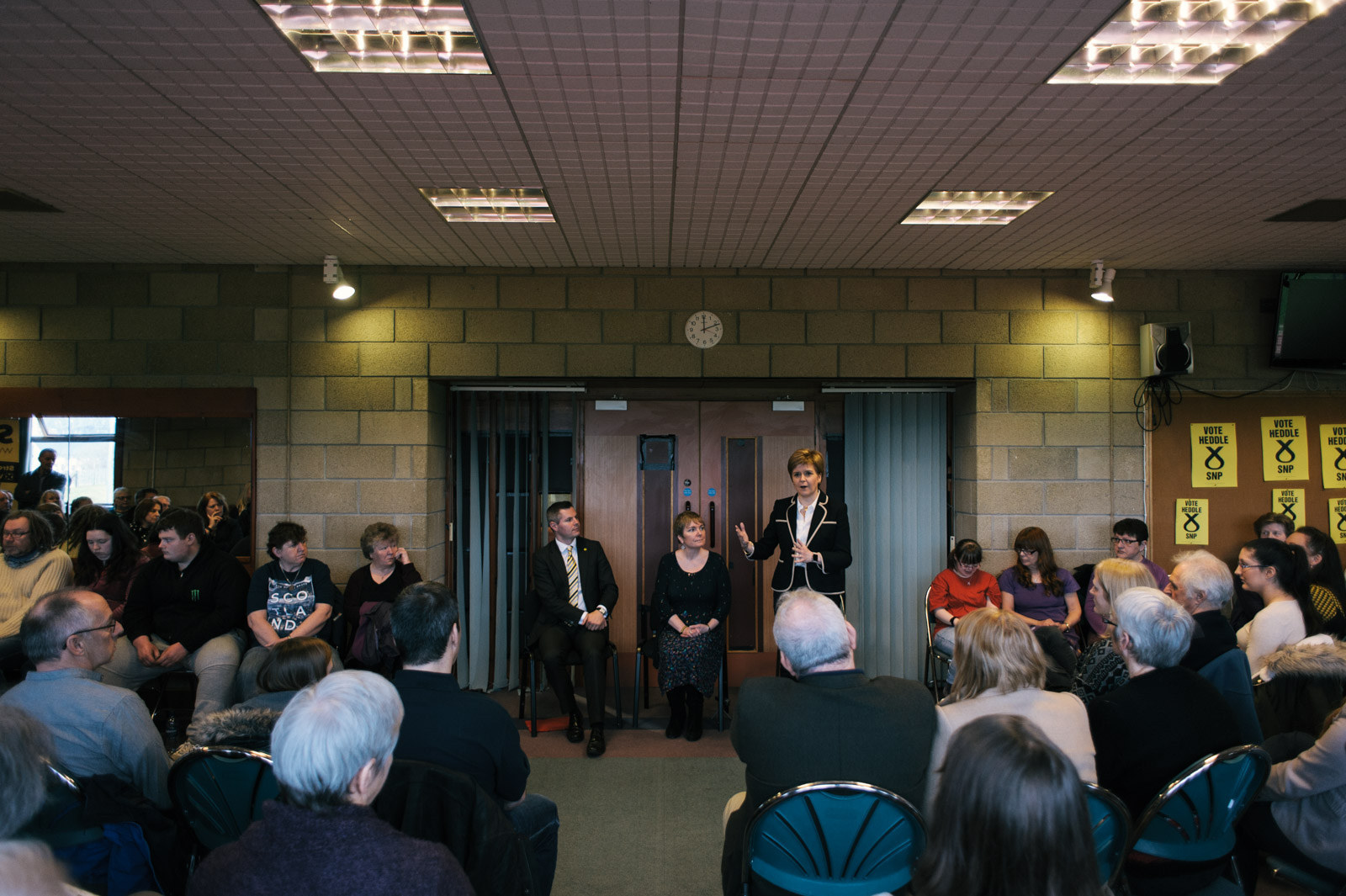
Occasionally she deals with a curveball – in Orkney, a beekeeper asked the first minister what she’s doing to tackle dementia in bees – and, when one furious man claims he’s been ignored during a Q&A, transport minister Derek Mackay is dispatched to be shouted at by him while Sturgeon does a round of selfies with her adoring crowd.
Although she rarely struggles to answer questions from the public directly, there are a few occasions when Sturgeon sounds evasive. On her controversial “named person” policy, which would allocate each child in Scotland with a guardian figure, she is asked directly by an islander, who is concerned it oversteps the mark on family privacy, whether the policy is compulsory or not: “Every child in Scotland will have a named person,” she says, “but the parents will not be obliged to take their advice.”
She also doesn’t seem as passionate as she possibly could be about next month’s referendum on European Union membership, conceding to anyone who raises their objections to the EU that they have good points and, on one occasion, saying she could “spend the whole evening” listing things that are wrong with the status quo. Imagine the SNP’s reaction if David Cameron had said the same of the UK during the independence referendum.
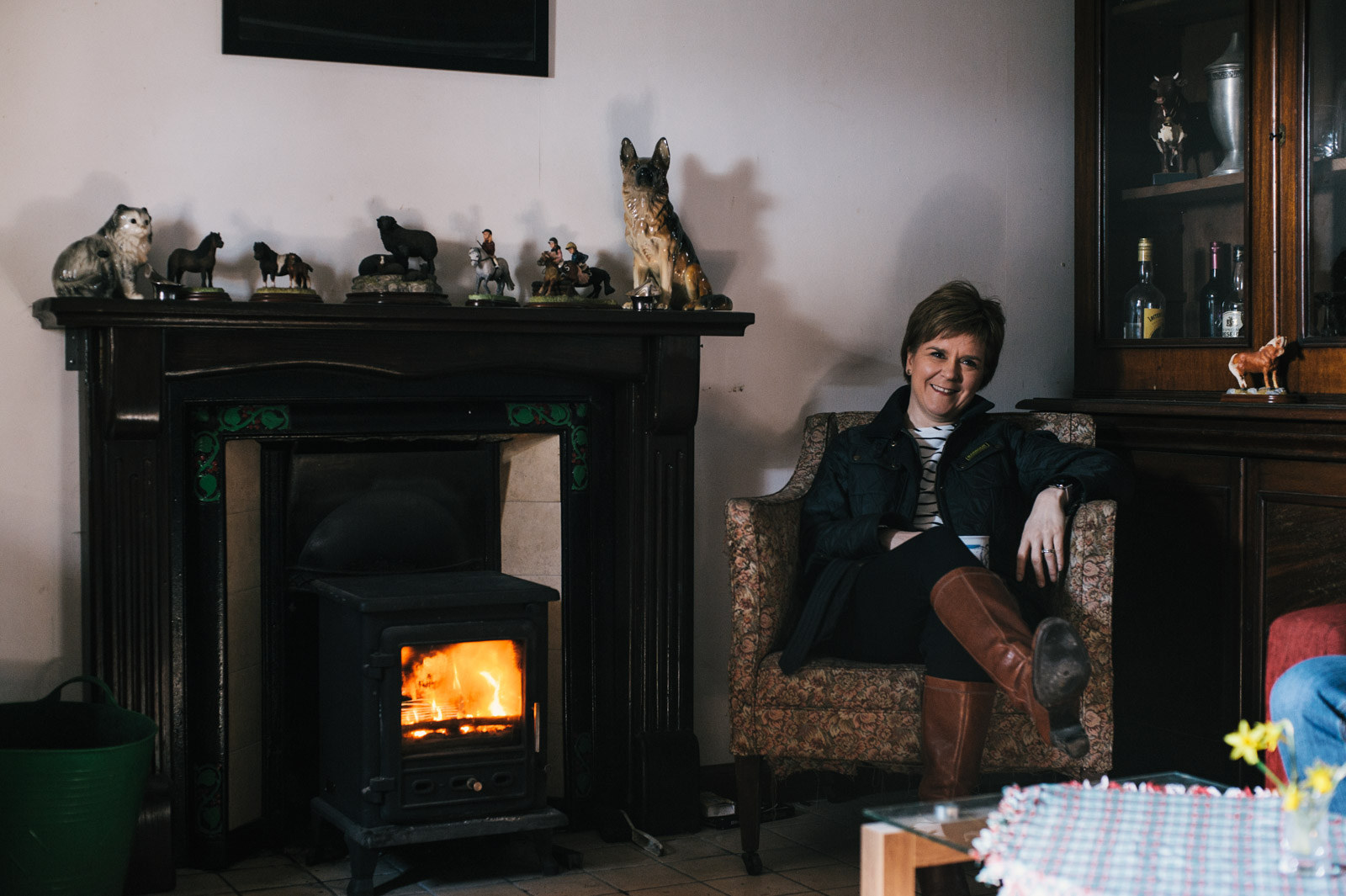
But largely, years of campaigning have left Sturgeon impressively comfortable at the kind of bizarre occasions only elections can throw up. On one trip to a Shetland brewery she spends half an hour finding out everything she can about lager production as if the very fate of Scotland hinged upon it, then convincingly seemed to enjoy a swig of beer and informed a burly Shetland brewer: “I’m more of a lager drinker than a beer drinker.”
The topic that still dominates political discussion in Scotland – other than dementia in bees, of course – is independence. The SNP was noticeably quieter about the issue in the general election campaign last year and it hasn’t featured much in this campaign so far. Sturgeon’s typical line when quizzed about the issue during the trip is that she doesn’t think it will “come as a surprise to anyone” that she supports independence, so she doesn’t have to keep reminding people.
But, pressed on whether, after the collapse in oil price and new figures showing Scotland’s economy in difficulty, independence has taken a back-seat for the SNP for the time being, Sturgeon answers frankly. She admits Scotland would have experienced financial difficulties if it had become independent at the end of last month, as was laid out in Salmond’s blueprint for independence ahead of the 2014 referendum, but insisted the party’s commitment to it will never fade.
“Scotland would have a deficit now,” Sturgeon says. “It would be a significant deficit. Would it be a deficit along the lines of the GERS figures [the Scottish government’s annual economic statistics]? Very probably not because our starting position as an independent country would have been influenced by the negotiations around share of assets, defence spending, debt interest, all these things would have influenced that.
“We would have been in a deficit position, but the UK is in a deficit position just now. I believe we will always be better off if we’re in control of the decisions we make about how to deal with these situations – the issues that are influencing the Scottish economy just now, the price of oil being the obvious one.

“Though Scotland is not unique in that position, there are oil-producing countries the world over who are facing these challenges; none of them would trade in their independence because being independent puts you in charge of the way in which you try to deal with challenges like that.”
The first minister is adamant that the SNP did not miss their best chance for independence in 2014, when Scotland’s economy seemed stronger. She has told BuzzFeed News it’s “entirely possible” that Scotland could hold another referendum and become an independent member of the EU by 2018 should the rest of the UK vote to leave next month, and suggested there could even be a Yes vote today if a snap independence vote were held.
“I think it would be closer than it was in 2014,” says Sturgeon. “Whether it would yet be Yes, I don’t know, it’s impossible to answer that question. I think every, or certainly almost every poll that has been published since the referendum has shown Yes support higher than it was on referendum day. So I think it would be certainly even closer than it was in 2014 and, who knows, maybe it would be a Yes vote.”
If, as all polling suggests, Sturgeon continues to be Scotland’s first minister after May’s election it will be the start of her first full term. In fact, although circumstances can change in politics – as anyone in Scottish Labour can tell you – it would be audacious to bet against her being in the top seat of the Scottish government for the decade to come.
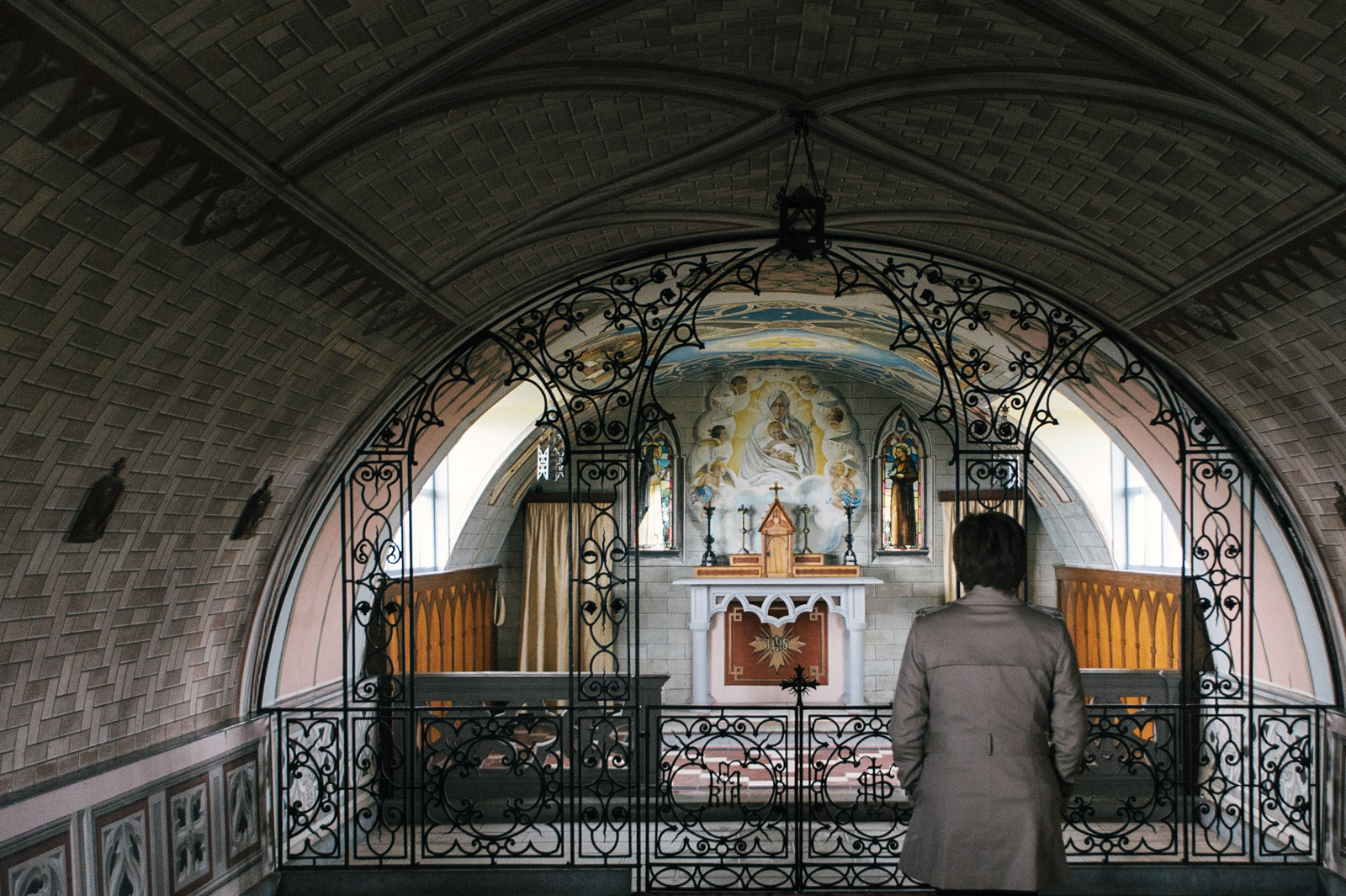
Soon thoughts will start to turn to exactly what "Sturgeonism" is, and what legacy she intends to leave. If, at the end of her time, Scotland isn’t independent, will she consider her tenure as first minister a failure?
“No,” she replies. “There’s a whole range of things [to judge her on]. Scotland is moving closer and closer to independence all the time and I have no doubt that’s where Scotland will end up. Whether that’s in my tenure or it takes longer than that, I can’t say for sure at the moment, but over the next few years we will continue taking steps towards it.”
She adds: “The issue I want to be measured against is education. I want to be able to look back and say we appreciably closed the attainment gap – it won’t happen in one year, it won’t happen in two years, it may not even happen completely over a five-year term. But I certainly want to see significant progress there – however long I’m in this job, that’s what I want to be able to look back on and say I made a difference there.”
One new campaign aid for the 2016 election is her Apple Watch – given to her by her husband and SNP chief executive Peter Murrell – which created controversy last week when Sturgeon had to deny that she was being fed lines on it by her advisers during a TV debate. She insists she didn’t have her phone on her during the show, meaning messages couldn’t reach her on the watch, adding sensationally that it was in fact Labour leader Kezia Dugdale who had her iPhone with her during the debate.
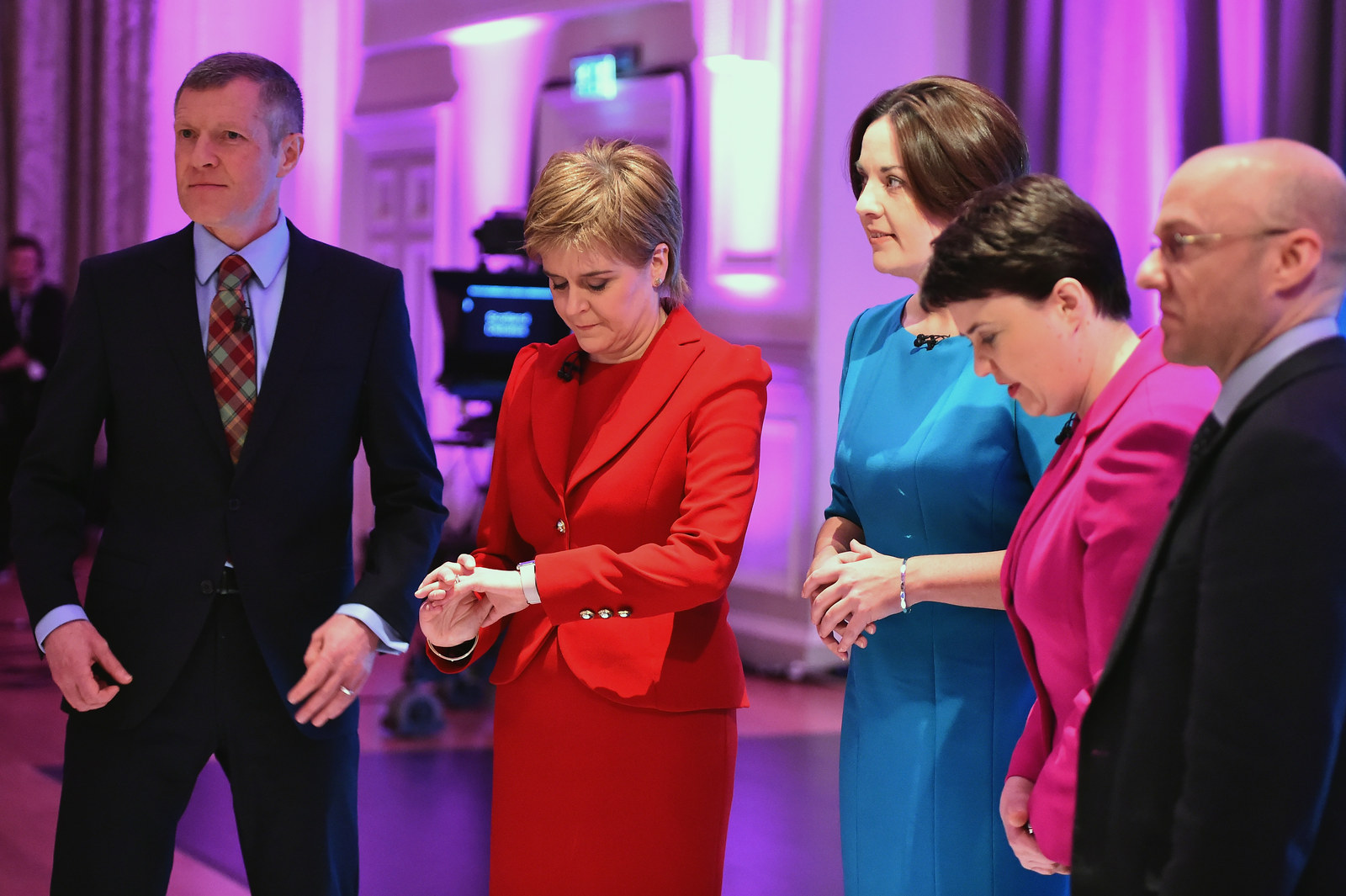
“I’m using it in the campaign mainly,” she says, jabbing at the watch’s face as it lights up with new emails. “The watch I normally wear, the battery has gone flat and Katie [one of Sturgeon’s staff] hasn’t got round to replacing it for me. But I’m also using it for the exercise stuff, for tracking the steps I’ve taken and stuff like that. I’ve taken 4,000 steps today, if you’re interested.”
BuzzFeed News informs her she could set it up to flash up with Twitter interactions, but the first minister, who, unusually, runs her Twitter page without the help of any of her media team or special advisers, dismisses that as an “awful” suggestion.
At the end of a trip where the public has showered praise on her, before she leaves for Kirkwall Airport to return to Edinburgh and continue a campaign that will end in a seemingly inevitable and sizeable victory, we ask her to think of a time she has actually found it difficult to be first minister since she took over from Salmond in 2014.
“I’m not going to say what the decision was but I remember the first time I had a decision to take and it wasn’t a run-of-the-mill decision,” she says. “It was a difficult decision with no obvious right or wrong thing to do. It was probably only a few days into the job and I remember feeling for the first time: ‘That guy isn’t next door to go and run it past.' It was a daunting feeling, but also reassuring to know it didn’t daunt me that much that I wasn’t able to do it.”
And, like David Cameron who has already said he doesn’t want to serve a third term as prime minister, does Sturgeon see a life after politics yet?
“I hope I’m just getting started,” she says.
